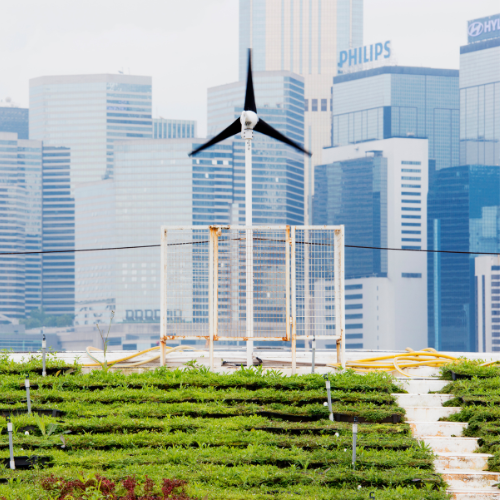6 February 2014
The Ideal of integrated urban planning – delivered on the ground via the ‘urban nexus’



Integrated planning is a much touted ideal in cities and could be seen as the holy grail of an urbanising planet.

We are living in the Urban Anthropocene, geoengineering the planet to suit the needs, dreams and hopes of its 6 billion human inhabitants. Without achieving effective, dynamic and revolutionary ways of actually implementing integrated planning we may quite literally be doomed. We know that we have severe constraints that will hinder an equitable, just and socially appropriate development trajectory of urban spaces around the world. Throw climate change impacts on top of this and we all know that the future is looking worrying. Food, water, energy – the basic building blocks that every human requires, are in sharp and rising demand as their supply diminishes. Basic economic principles tell us that when this happens we need to substitute to meet mass demand, in order to avoid a) outstripping the resource and b) having prices pushed beyond the reach of the large majority of the global population.
But what does this mean for rapidly growing cities and metropolitan regions in the global south? What options are there for delivering food, water and energy to growing urban regions? Are there ways of approaching development and spatial planning that can minimise inefficiencies, reduce costs and redundancies? Can we utilise new sources of water and energy and seek solutions that will help us to stop continually losing out while maximising pivotal opportunities that can also create green jobs, sustainable industries and supply chains, creating the productive, resilient and liveable cities we seek?

Urban areas in many global south cities are largely informal and chaotic by nature. Their governing administrations do not have ample resources to formalise services at a rapid enough rate. The needs are many; but primarily the need for challenging and changing our service delivery models and resource use is imperative. If we continue as per usual, we are building into our cities massive amounts of additional risks that will likely lead to crises, instability and potentially even unrest. This is ultimately what the Urban Nexus aims to achieve – new models and methodologies for focusing on multi-sectoral approaches to problem solving in cities – and most importantly, resulting in delivery. Many attempts to implement integrated planning have not been successful up until now, thus requiring new approaches in doing so.
As an illustration, imagine a poor school in Dar es Salaam, where over the years various infrastructure and services have been supplied (either by the government or via development aid). There you might see improved water and sanitation, a water pump, and possibly a connection to the national electricity grid. But you might also see that the electricity often goes out, and thus water from the borehole cannot be pumped. You might also see the school feeding programme cooking on open fuelwood fired energy sources.
In this scenario there are clearly missed opportunities – why not install a system that allows the school to create their own energy such as through biogas? This would aid them in smoothing their water supply, reducing their costs, decreasing the impacts on health via reducing smoke inhalation, as well as reducing the impact on distant ecosystems (such as the watershed of the Ruvu River which incidentally is the main water source of the city itself). Utilisation of biogas could allow some waste from the surrounding community to be processed into energy, and surplus energy could be sold to a local food vendor.


